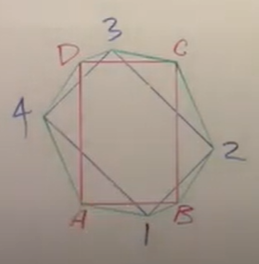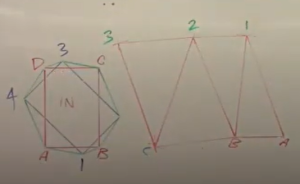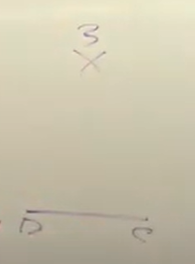6 Twisted Fitting
- Because the top and bottom are parallel, triangulation from plan view will be used. This is a much quicker way to develop the pattern, compared to using elevation view.

- Draw a plan view complete with element lines and labeling. Label the top with 1-4 and A-D for the bottom. This is one of the only fittings I like to label a square or rectangle with numbers.

- Draw a true length diagram (TLD) with the vertical height and a horizonal leg long enough for the longest element line in the plan view
- Place any element line which is letter to number in the TLD

- Start the pattern with baseline B-A. Remember when we go from letter to letter or number to number, it is a true length in the plan view. It is only when we go from letter to number when the true length must be found. We also must consider that we always want to layout the inside of any fitting. For a twisted fitting, we need to flip the way we see line A-B, to look at the inside.

- Find the true lengths of A-1 and B-1 and triangulate point 1
- Continue to build triangles, one after another
- Find the true length of line B-2 and swing from point B
- Pick up line 1-2 and swing from point 1 to complete point 2
- Find the true length of line 2-C and swing it from 2
- Pick up line B-C and swing it from B to create point C
- Find the true length of line C-3 and swing it from C
- Pick up line 2-3 and swing it from 2 to create point 3
- We have now completed a half pattern

- Start the second half with baseline D-C

- Find the true lengths of D-3 and C-3 and triangulate point 3
- Find the true length of line D-4 and swing it from point D
- Pick up line 3-4 and swing it from 3 to complete point 4
- Find the true length of line 4-A and swing it from point 4
- Pick up line D-A and swing it from d to complete point A
- Find the true length of line A-1 and swing it from point A
- Pick up line 4-1 and swing it from 4 to complete point 1
- Both patterns now have seams or edges of A-1 and 3-C which will join when the fitting is assembled.
